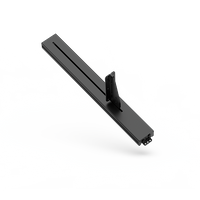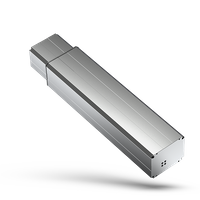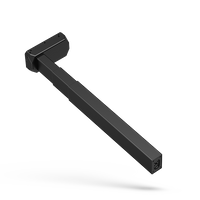- Home
-
- TF Integrated Workstation
- TT Integrated Station
- TS Single-Person Station
- TO Single-Person Station
- Advanced Office Table
- Manager Table
- Odette Conference Table
- Lifting White Board
- Lifting Podium
- Working Port
- Zen Standing Desk
- Lifting Coffee Table
- Home Standing Desk
- Nature Standing Desk
- Invictus Gaming Desk
- Study Desk
-
-
- Electric Hospital Bed
- Image Equipment
- Examination Bed/Clinic Bed
- Operation Table and Chair
- Infant Incubator
- Independent Weighing System
- Home Care Bed
- Patient Lift
- Wheelchair
- Toilet Lift
- Bath Lift
- Shower Trolley
- Smart Rollator Walker
- Ophthalmic Workstation
- Treatment Chair
- Facial Chair
- Traction Table
- Massage Chair
- OT Training Equipment
- Stand-up Application
- Rehabilitation Robot
-
-
- Photovoltaic Application
- Photothermal Application
- Energy Storage Container
- Tractor
- Seeder
- Fertilizer Spreader
- Harvester
- Rotary Cultivator
- Climate Control System
- Automatic Feeding System
- Excavator
- High Altitude Work Platform
- Garbage Truck
- Street Sweeper
- AMR Automated Guided Vehicle (AGV) and Autonomous Mobile Robot (AMR)
- Forklift Accessories
- Palletizing Collaborative Robots
- Packaging Machine
-
-
Adjustable Electric Lifting Column Buying Guide
Views: 0 Author: Site Editor Publish Time: 2024-04-26 Origin: Site
What are lifting columns?
Lifting columns are innovative mechanical devices designed to provide adjustable height functionality in various applications. They consist of a series of telescopic tubes or segments that can be extended or retracted to change the overall height of the column. These columns are commonly used in ergonomic furniture, medical equipment, industrial workstations, and other settings where height adjustability is essential.
The lifting mechanism of a lifting column typically involves an electric motor or a hydraulic system that drives the movement of the telescopic segments. This allows users to effortlessly adjust the height of the column to their desired position, providing ergonomic support and flexibility in different tasks.

One of the key features of lifting columns is their ability to provide smooth and precise height adjustments, allowing users to find the ideal working or seating position for enhanced comfort and productivity. Additionally, lifting columns often come with safety features such as anti-collision sensors or overload protection to prevent accidents and ensure reliable operation.
Overall, lifting columns offer a versatile solution for achieving adjustable height functionality in various applications, making them a valuable component in modern ergonomic design and industrial automation.
How do you choose the right lifting column?
Choosing the right lifting column involves considering several key factors to ensure that it meets your specific requirements and application needs. Here are some important considerations to keep in mind:
Load Capacity: Determine the maximum weight that the lifting column needs to support. Make sure to select a lifting column with a load capacity that exceeds the weight of the equipment or object it will be lifting.
Stroke Length: Consider the vertical travel distance required for your application. Choose a lifting column with a stroke length that accommodates the full range of motion needed for your specific task.
Speed: Assess the desired speed of height adjustment. Depending on the application, you may need a lifting column with faster or slower speed capabilities. Some lifting columns offer adjustable speed settings to accommodate different requirements.
Control Options: Evaluate the control options available for operating the lifting column. This may include manual controls, remote control systems, or integrated electronic interfaces. Choose a control method that is convenient and intuitive for users.
Mounting Options: Determine the mounting configuration that best suits your application. Lifting columns are available in various mounting styles, including floor-mounted, wall-mounted, or integrated into furniture or equipment.
Safety Features: Look for lifting columns that incorporate safety features such as overload protection, anti-collision sensors, and emergency stop functions. These features help prevent accidents and ensure safe operation in diverse environments.
Durability and Reliability: Consider the build quality and reliability of the lifting column. Choose a product from a reputable manufacturer known for producing high-quality, durable components that can withstand frequent use and harsh operating conditions.
Customization Options: Explore any customization options available for the lifting column, such as adjustable stroke lengths, mounting accessories, or integrated control systems. Tailoring the lifting column to your specific needs can enhance its functionality and performance.
By carefully considering these factors and selecting a lifting column that aligns with your application requirements, you can ensure optimal performance and efficiency in your lifting tasks.
What are the differences between lifting column types?
Lifting columns come in various types, each with its own unique features and advantages. The main differences between lifting column types typically revolve around their construction, mechanism of operation, and intended applications. Here's a brief overview of common lifting column types and their differences:
Electric Lifting Columns:
Operated by electric motors, which provide precise control over height adjustment.
Often used in ergonomic furniture, medical equipment, and industrial applications where accurate positioning is essential.
Offer smooth and quiet operation, with adjustable speed settings for customized performance.
Hydraulic Lifting Columns:
Powered by hydraulic fluid pressure, typically using a hydraulic pump and cylinder system.
Known for their high lifting capacities and robust construction, making them suitable for heavy-duty lifting tasks.
Commonly used in automotive lifts, industrial machinery, and material handling equipment.
Pneumatic Lifting Columns:
Utilize compressed air or gas to generate lifting force, often through pneumatic cylinders or air springs.
Offer rapid height adjustment and are relatively lightweight compared to hydraulic or electric alternatives.
Frequently used in applications requiring quick and frequent height changes, such as height-adjustable workstations and assembly lines.
Manual Lifting Columns:
Operated by hand through mechanical mechanisms such as cranks, levers, or screws.
Simple and cost-effective solution for height adjustment in certain applications, although they may require more effort and time compared to powered alternatives.
Commonly found in manual height-adjustable tables, desks, and workbenches.
Telescopic Lifting Columns:
Feature nested sections that extend and retract telescopically to provide adjustable height.
Offer compact storage and extended reach capabilities, making them suitable for applications where space is limited or variable height adjustments are needed.
Overall, the choice of lifting column type depends on factors such as lifting capacity, speed requirements, control preferences, and the specific demands of the application. By understanding the differences between these types, you can select the most suitable lifting column for your needs.
QUICK LINKS


















